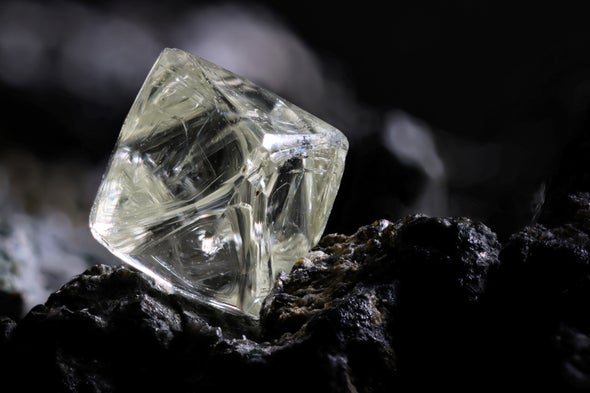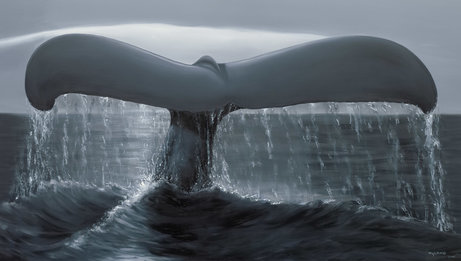

The breakup of supercontinents may trigger explosive eruptions that send fountains of diamonds shooting up to Earth’s surface.
Diamonds form deep in Earth’s crust, approximately 93 miles (150 kilometers) down. They are brought up to the surface very quickly in eruptions called kimberlites. These kimberlites travel at between 11 and 83 mph (18 to 133 km/h), and some eruptions may have created Mount Vesuvius-like explosions of gases and dust, said Thomas Gernon, a professor of Earth and climate science at the University of Southampton in England.
Researchers noticed that kimberlites occur most often during times when the tectonic plates are rearranging themselves in big ways, Gernon said, such as during the breakup of the supercontinent Pangaea. Oddly, though, kimberlites often erupt in the middle of continents, not at the edges of breakups — and this interior crust is thick, tough and hard to disrupt.
“The diamonds have been sat at the base of the continents for hundreds of millions or even billions of years,” Gernon said. “There must be some stimulus that just drives them suddenly, because these eruptions themselves are really powerful, really explosive.”
Gernon and his colleagues began by looking for correlations between the ages of kimberlites and the degree of plate fragmentation occurring at those times. They found that over the last 500 million years, there is a pattern where the plates start to pull apart, then 22 million to 30 million years later, kimberlite eruptions peak. (This pattern held over the last 1 billion years as well but with more uncertainty given the difficulties of tracing geologic cycles that far back.)
For example, the researchers found that kimberlite eruptions picked up in what is now Africa and South America starting about 25 million years after the breakup of the southern supercontinent Gondwana, about 180 million years ago. Today’s North America also saw a spike in kimberlites after Pangaea began to rift apart around 250 million years ago. Interestingly, these kimberlite eruptions seemed to start at the edges of the rifts and then marched steadily toward the center of the land masses.
To figure out what was driving these patterns, the researchers used multiple computer models of the deep crust and upper mantle. They found that when tectonic plates pull apart, the base of the continental crust thins — just as the crust up top stretches out and forms valleys. Hot rock rises, comes into contact with this now-disrupted boundary, cools and sinks again, creating local areas of circulation.
These unstable regions can trigger instability in neighboring regions, gradually migrating thousands of miles toward the center of the continent. This finding matches the real-life pattern seen with kimberlite eruptions starting near rift zones and then moving to continental interiors, the researchers reported July 26 in the journal Nature.
But how do these instabilities cause explosive eruptions from deep in the crust? It’s all in the mixing of just the right materials, Gernon said. The instabilities are enough to allow rock from the upper mantle and lower crust to flow against each other.
This churns together rock with lots of water and carbon dioxide trapped within it, along with many key kimberlite minerals — including diamonds. The result is like shaking a bottle of champagne, Gernon said: eruptions with a lot of explosive potential and buoyancy to drive them to the surface.
The findings could be useful in searching for undiscovered diamond deposits, Gernon said. They might also help explain why there are other types of volcanic eruptions that sometimes occur long after a supercontinent breakup in regions that should be largely stable.
“It’s a fundamental and highly organized physical process,” Gernon said, “so it’s likely not just kimberlites responding to it, but it could be a whole array of Earth system processes that are responding to this as well.”
Copyright 2023 LiveScience, a Future company. All rights reserved. This material may not be published, broadcast, rewritten or redistributed.

